The Whig Party was a conservative political party that existed in the United States during the mid-19th century. Alongside the slightly larger Democratic Party, it was one of the two major parties in the United States between the late 1830s and the early 1850s as part of the Second Party System. Four presidents were affiliated with the Whig Party for at least part of their terms. Other prominent members of the Whig Party include Henry Clay, Daniel Webster, Rufus Choate, William Seward, John J. Crittenden, and John Quincy Adams. The Whig base of support was centered among entrepreneurs, professionals, planters, social reformers, devout Protestants, and the emerging urban middle class. It had much less backing from poor farmers and unskilled workers.

The 1832 United States presidential election was the 12th quadrennial presidential election, held from Friday, November 2 to Wednesday, December 5, 1832. Incumbent president Andrew Jackson, candidate of the Democratic Party, defeated Henry Clay, candidate of the National Republican Party.

The 1852 United States presidential election was the 17th quadrennial presidential election, held on Tuesday, November 2, 1852. Democrat Franklin Pierce defeated Whig nominee General Winfield Scott. A third party candidate from the Free Soil party, John P. Hale, also ran and came in third place, but got no electoral votes.

The 1856 United States presidential election was the 18th quadrennial presidential election, held on Tuesday, November 4, 1856. In a three-way election, Democrat James Buchanan defeated Republican nominee John C. Frémont and Know Nothing nominee Millard Fillmore. The main issue was the expansion of slavery as facilitated by the Kansas–Nebraska Act of 1854. Buchanan defeated President Franklin Pierce at the 1856 Democratic National Convention for the nomination. Pierce had become widely unpopular in the North because of his support for the pro-slavery faction in the ongoing civil war in territorial Kansas, and Buchanan, a former Secretary of State, had avoided the divisive debates over the Kansas–Nebraska Act by being in Europe as the Ambassador to the United Kingdom.
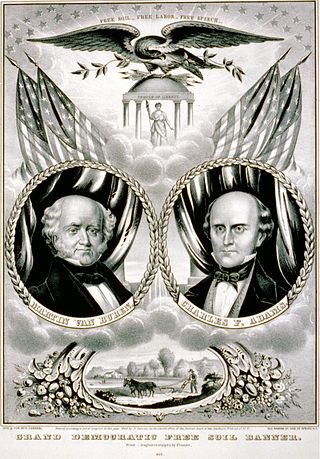
The Free Soil Party was a short-lived coalition political party in the United States active from 1848 to 1854, when it merged into the Republican Party. The party was largely focused on the single issue of opposing the expansion of slavery into the western territories of the United States.

The 1860–61 United States House of Representatives elections were held on various dates in various states between August 6, 1860 and October 24, 1861, before or after the first session of the 37th United States Congress convened on July 4, 1861. The number of House seats initially increased to 239 when California was apportioned an extra one, but these elections were affected by the outbreak of the American Civil War and resulted in over 56 vacancies.

The 34th United States Congress was a meeting of the legislative branch of the United States federal government, consisting of the United States Senate and the United States House of Representatives. It met in Washington, D.C., from March 4, 1855, to March 4, 1857, during the last two years of Franklin Pierce's presidency. The apportionment of seats in the House of Representatives was based on the 1850 United States census. The Whig Party, one of the two major parties of the era, had largely collapsed, although many former Whigs ran as Republicans or as members of the "Opposition Party." The Senate had a Democratic majority, and the House was controlled by a coalition of Representatives led by Nathaniel P. Banks, a member of the American Party.

The 1858–59 United States House of Representatives elections were held on various dates in various states between June 7, 1858 and December 1, 1859. Each state set its own date for its elections to the House of Representatives. 238 representatives were elected in the new state of Oregon, the pending new state of Kansas, and the other 32 states before the first session of the 36th United States Congress convened on December 5, 1859. They were held during President James Buchanan's term.

The 1854–55 United States House of Representatives elections were held in 31 states for all 234 seats between August 4, 1854 and November 6, 1855, during President Franklin Pierce's term. Each state legislature separately set a date to elect representatives to the House of Representatives before the 34th Congress convened its first session on December 3, 1855.
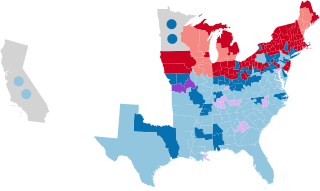
The 1856–57 United States House of Representatives elections were held on various dates in various states between August 4, 1856 and November 4, 1857. Each state set its own date for its elections to the House of Representatives. 236 representatives were elected in 31 states and the pending new state of Minnesota before the first session of the 35th United States Congress convened on December 7, 1857.
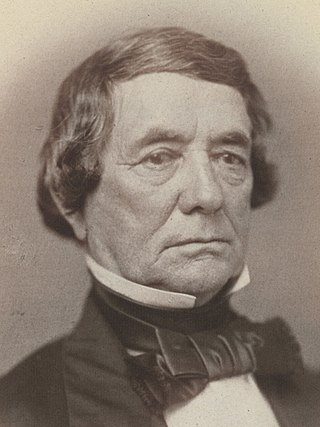
William Wright was an American politician who served as 5th Mayor of Newark, New Jersey, represented New Jersey's 5th congressional district as a Whig in the United States House of Representatives from 1843 to 1847, and represented New Jersey in the United States Senate as a Democrat from 1853 to 1859, and again from 1863 until his death.
The Unionist Party, later known as the Unconditional Union Party in the border states, was a political party in the United States started after the Compromise of 1850 to define politicians who supported the Compromise. It was used primarily as a label by politicians who did not want to affiliate with the Republicans, or wished to win over anti-secession Democrats. Members included Southern Democrats who were loyal to the Union as well as elements of the old Whig Party and other factions opposed to a separate Southern Confederacy.

Charles Slaughter Morehead was a U.S. Representative from Kentucky, and served as the 20th Governor of Kentucky. Though a member of the Whig Party for most of his political service, he joined the Know Nothing, or American, Party in 1855, and was the only governor of Kentucky ever elected from that party.
The 2nd congressional district of Tennessee is a congressional district in East Tennessee. It has been represented by Republican Tim Burchett since January 2019. Although the district has taken many forms over the years, it has been centered on Knoxville since 1853. During the American Civil War era, the area was represented in Congress by Horace Maynard. Maynard switched parties many times but was pro-U.S. and did not resign from Congress when Tennessee declared seceded. Maynard entered Congress in 1857 but did not leave entirely until 1875.
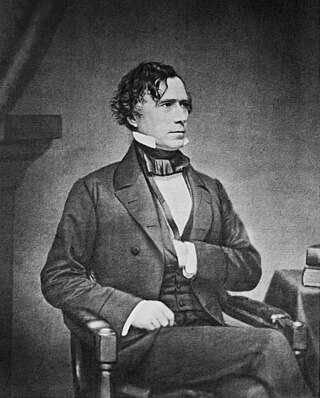
The presidency of Franklin Pierce began on March 4, 1853, when Franklin Pierce was inaugurated, and ended on March 4, 1857. Pierce, a Democrat from New Hampshire, took office as the 14th United States president after routing Whig Party nominee Winfield Scott in the 1852 presidential election. Seen by fellow Democrats as pleasant and accommodating to all the party's factions, Pierce, then a little-known politician, won the presidential nomination on the 49th ballot of the 1852 Democratic National Convention. His hopes for reelection ended after losing the Democratic nomination at the 1856 Democratic National Convention.

The 1858–59 United States Senate elections were held on various dates in various states. As these U.S. Senate elections were prior to the ratification of the Seventeenth Amendment in 1913, senators were chosen by state legislatures. Senators were elected over a wide range of time throughout 1858 and 1859, and a seat may have been filled months late or remained vacant due to legislative deadlock. In these elections, terms were up for the senators in Class 2.
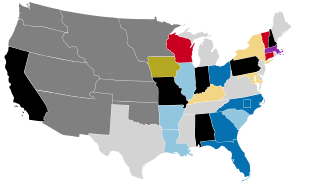
The 1854–55 United States Senate elections were held on various dates in various states. As these U.S. Senate elections were prior to the ratification of the Seventeenth Amendment in 1913, senators were chosen by state legislatures. Senators were elected over a wide range of time throughout 1854 and 1855, and a seat may have been filled months late or remained vacant due to legislative deadlock. In these elections, terms were up for the senators in Class 3.
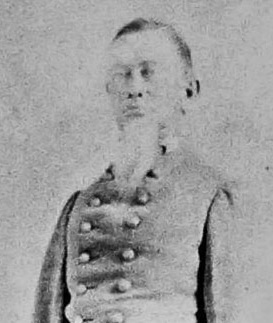
The 1858 United States House of Representatives election in Florida was held on Monday, October 4, 1858 to elect the single United States Representative from the state of Florida, one from the state's single at-large congressional district, to represent Florida in the 36th Congress. The election coincided with the elections of other offices, including various state and local elections.
The Opposition Party was a party identification under which Northern anti-slavery politicians, formerly members of the Democratic and the Whig Parties, briefly ran in the 1850s in response to the expansion of slavery into the new territories. It was one of the movements that arose from the political chaos in the decade before the American Civil War in the wake of the Compromise of 1850. The movement had arisen before and was quickly subsumed by the coalescence of the Republican Party in 1856.














